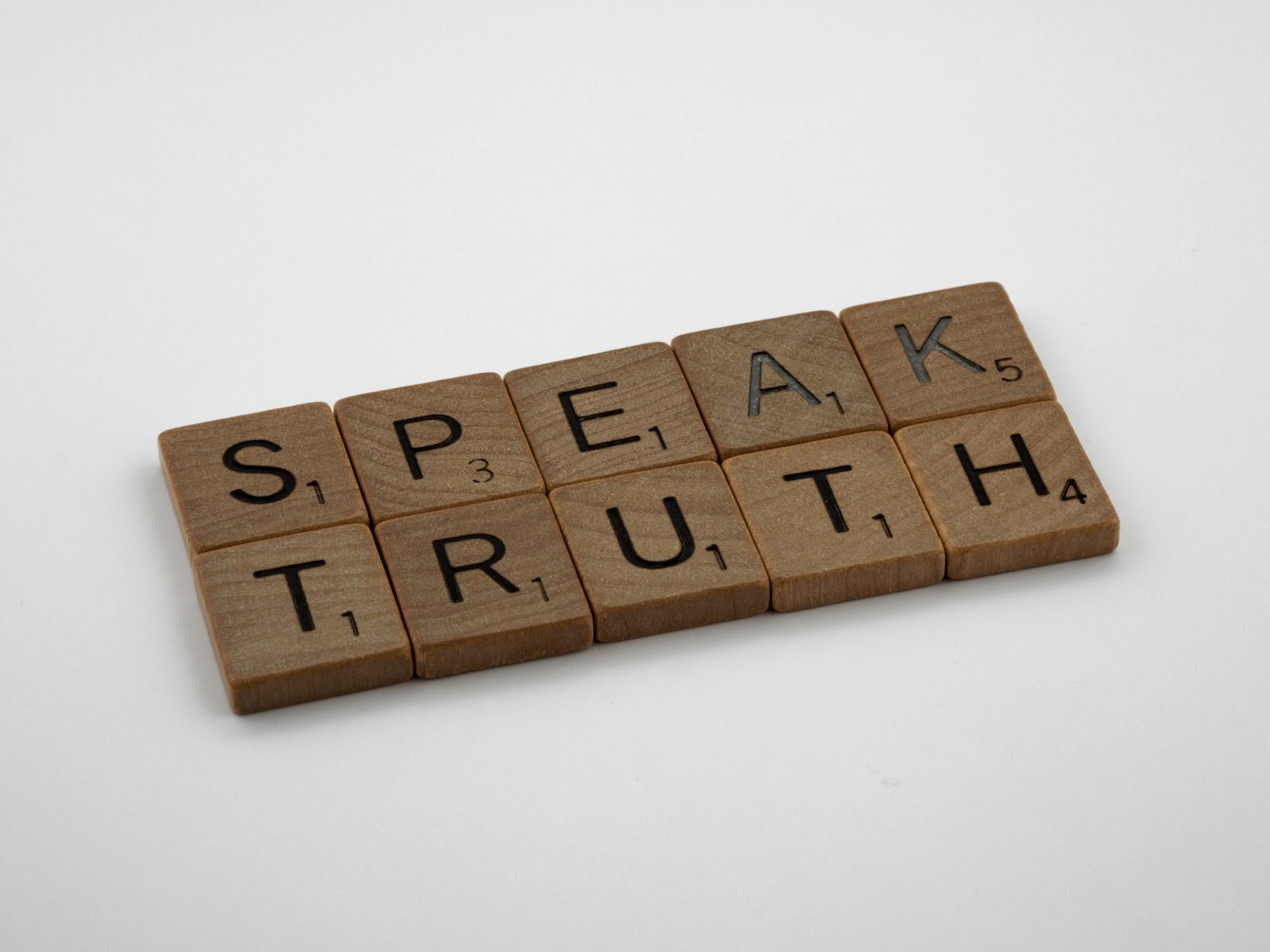Introduction
Brief Overview of the Importance of Meeting People Where They Are
Understanding the significance of meeting people where they are is like unlocking a secret doorway to meaningful connections. It’s all about tailoring your approach to align with the unique perspectives, emotions, and experiences of each individual you encounter. By doing so, you can bridge gaps, foster empathy, and create genuine relationships that stand the test of time.
Introducing the Concept of Honesty in Communication
Honesty is often hailed as the cornerstone of effective communication. We’re taught from an early age that telling the truth is paramount in building trust and respect.
However, when it comes to navigating the complex web of human interactions, a one-size-fits-all approach may not always cut it. There are instances where honesty, though virtuous in essence, may not serve the greater good in terms of preserving relationships or safeguarding emotional well-being.
In a world where honesty reigns supreme, it’s essential to explore scenarios where veering off the path of complete transparency might be more beneficial than detrimental.
In this article, we’ll delve into the nuances of interpersonal communication and unravel when honesty isn’t necessarily the best policy—shedding light on how understanding different perspectives, building trust gradually, protecting personal boundaries, and navigating sensitive situations can pave the way for more authentic and harmonious interactions. So buckle up as we embark on a journey through the labyrinthine terrain of human connection!
The Importance of Meeting People Where They Are
When it comes to communication, one of the most crucial aspects is meeting people where they are. This means recognizing and respecting the unique perspectives, backgrounds, and emotional states of individuals before engaging in any form of dialogue. By acknowledging the importance of meeting people where they are, we demonstrate empathy and create a solid foundation for meaningful interactions.
Each person carries a distinct set of experiences, beliefs, and values that shape how they perceive the world around them. By taking the time to understand these differences, we can bridge the gap between our own reality and that of others.
Whether it’s in personal relationships or professional settings, meeting people where they are lays the groundwork for building trust, fostering understanding, and promoting effective communication. Furthermore, meeting people where they are allows us to tailor our approach to suit their specific needs and preferences.
It involves adapting our communication style, tone, and language to ensure that our message resonates with them on a deeper level. This adaptability not only enhances the quality of our interactions but also shows genuine respect for the individuality of each person we encounter.
The Role of Honesty in Communication
Honesty is often hailed as a cornerstone of effective communication – and rightfully so. Transparency and truthfulness form the bedrock upon which trust is built in any relationship.
However, while honesty is undeniably important, there are instances where it may not always be the best course of action. In certain situations – such as when dealing with sensitive topics or vulnerable individuals – being brutally honest can do more harm than good.
It’s essential to recognize that honesty should be tempered with compassion and sensitivity to ensure that our words have a positive impact rather than causing unnecessary distress. Fostering open communication doesn’t always mean revealing every detail or thought that comes to mind.
Sometimes withholding certain information or framing it in a more considerate manner can demonstrate wisdom and emotional intelligence. By understanding when honesty may not be appropriate or beneficial in a particular context, we can navigate conversations more skillfully and nurture stronger connections with those around us.
Understanding Different Perspectives
Recognizing Cultural Differences in Communication Styles
Communication is a complex dance influenced by factors like culture, upbringing, and personal experiences. When engaging with others, it’s crucial to recognize that what may be considered direct or honest in one culture could be perceived as confrontational or rude in another.
For example, some cultures value indirect communication to maintain harmony and avoid conflict, while others prioritize straightforwardness and honesty as a sign of respect. By being aware of these differences, we can adapt our communication style to better resonate with individuals from diverse cultural backgrounds.
Acknowledging Individual Emotional States and Vulnerabilities
Emotions play a significant role in how we receive information and engage in conversations. People’s emotional states can vary greatly depending on external factors such as stress, grief, or joy.
Acknowledging these emotional nuances is essential when deciding whether honesty is the best approach in a given situation. For instance, sharing harsh truths with someone who is already feeling vulnerable may do more harm than good.
By tuning into individuals’ emotional cues and showing empathy towards their vulnerabilities, we can navigate conversations with sensitivity and understanding. In essence, understanding different perspectives entails recognizing the multifaceted nature of human communication.
By embracing the diversity of cultural norms and appreciating individual emotional landscapes, we empower ourselves to connect more authentically with others. This nuanced approach allows us to tailor our communication strategies effectively based on the unique perspectives and sensitivities of those we encounter along our journey of meeting people where they are.
Building Trust Gradually
Establishing Rapport Before Delving into Sensitive Topics
Building trust is like constructing a sturdy bridge between you and another person. It requires a solid foundation of mutual understanding and respect. Before diving headfirst into weighty or delicate conversations, take the time to establish rapport.
This could mean engaging in small talk, sharing personal anecdotes, or simply showing genuine interest in the other person’s thoughts and feelings. By creating a comfortable environment where both parties feel valued and heard, you lay the groundwork for more meaningful and honest exchanges down the line.
When trying to establish rapport, remember that communication is a two-way street. Listen actively to what the other person is saying, maintain eye contact, and show empathy through your body language.
People are more likely to open up when they feel that they are being listened to attentively. By demonstrating your willingness to engage authentically with them on a personal level, you convey that you value their perspective and are invested in building a connection based on trust.
Using Empathy to Gauge Readiness for Honesty
Empathy is the compass that guides us through the intricate terrain of human emotions. Before deciding whether honesty is the best policy in a particular situation, it’s essential to empathize with the other person’s state of mind.
Put yourself in their shoes and try to understand their feelings, fears, and concerns. Empathy allows you to gauge their readiness for honesty by sensing their emotional cues and vulnerabilities.
To effectively use empathy as a tool for communication, pay attention not only to what is being said but also to what remains unspoken. Often, people convey more through their non-verbal cues than through words alone.
Look for signs of discomfort or hesitation that may indicate they are not yet prepared for complete honesty. By tuning into these subtle signals with sensitivity and understanding, you can determine when it’s appropriate to broach sensitive topics with openness and transparency.
Guarding Your Emotional Fortress
In the realm of interpersonal dynamics, protecting personal boundaries is akin to setting up castle walls to safeguard your mental and emotional well-being. Just as a fortress shields its inhabitants from external threats, boundaries serve as a crucial defense mechanism against potential harm in relationships.
By clearly defining your limits and communicating them effectively, you establish a sense of security and autonomy in interactions with others. Maintaining healthy boundaries involves recognizing your own needs and values, then asserting them confidently without fear of judgment or guilt.
This self-awareness empowers you to navigate social situations with authenticity and integrity. Whether it’s asserting the need for alone time to recharge or communicating discomfort with certain topics, setting clear boundaries helps establish mutual respect and understanding in relationships.
The Art of Selective Disclosure
Knowing when to withhold information for self-preservation is a delicate balancing act that requires discernment and tact. While transparency is often lauded as a virtue, there are instances where divulging too much too soon can leave you vulnerable or compromised.
Understanding the context and purpose behind sharing personal details is key to determining what should be kept private. Selective disclosure doesn’t equate to deception; rather, it involves exercising discretion in revealing sensitive information based on trust levels and perceived risks.
By gauging the intentions and motives of those around you, you can make informed decisions about what aspects of yourself are safe to expose. This nuanced approach allows you to protect your privacy without sacrificing authenticity in your interactions.
Navigating Sensitive Situations
Handling Delicate Topics with Care and Sensitivity
When it comes to addressing sensitive topics, it’s crucial to approach them with the utmost care and sensitivity. Delicate issues such as personal struggles, past traumas, or sensitive beliefs require a gentle touch in communication. Start by creating a safe and non-judgmental space for the other person to open up.
Listen actively, show empathy, and validate their feelings before jumping into the heart of the matter. One effective strategy is to use open-ended questions that allow the other person to share at their own pace.
Avoid making assumptions or passing judgment prematurely. Instead, focus on understanding their perspective and emotions behind the topic at hand.
Remember, sensitivity in communication isn’t just about what you say but also how you say it. Pay attention to your tone of voice, body language, and choice of words to convey empathy and respect.
Balancing Transparency with Tact in Difficult Conversations
Finding the right balance between transparency and tact is an art form when navigating difficult conversations. While honesty is important, delivering harsh truths without regard for the other person’s feelings can do more harm than good.
Begin by acknowledging the challenging nature of the conversation and expressing your intention to discuss it respectfully. Be mindful of your language – opt for gentle phrasing that conveys honesty without unnecessary bluntness.
Consider framing your points in a constructive manner by offering solutions or alternatives along with feedback. Avoid placing blame or making sweeping generalizations that could escalate tensions.
It’s essential to strike a delicate balance between being upfront about your thoughts while also showing compassion towards the other person’s emotions. Remember, effective communication is not just about speaking your mind but also about fostering understanding and mutual respect in difficult dialogues.
Conclusion
Recap of Key Points on When Honesty May Not Be the Best Approach
When it comes to communication, we’ve explored the delicate balance of honesty and adaptability in meeting people where they are. Cultural differences, emotional vulnerabilities, and personal boundaries all play a role in determining when complete honesty may not be the most effective approach.
It’s crucial to consider the context and individual circumstances before choosing how much truth to reveal. In our journey through this topic, we’ve learned that honesty is not always black and white.
Sometimes, withholding information or sugarcoating the truth can be more beneficial in fostering understanding and building trust with others. By being mindful of these nuances, we can navigate complex interpersonal dynamics with sensitivity and empathy.
Emphasizing the Importance of Adaptability in Communication Strategies
Communication is a dynamic exchange that requires flexibility and adaptability. As we interact with different people in various situations, it’s essential to tailor our approach to meet their needs effectively.
Adapting our communication style, tone, and level of honesty based on the context demonstrates emotional intelligence and respect for others’ feelings. In closing, remember that communication is a two-way street where understanding and connection are paramount.
By acknowledging when honesty may not be the best move and embracing adaptability in our communication strategies, we pave the way for deeper relationships and meaningful interactions. Let’s approach every encounter with an open mind and a willingness to meet people where they are – it’s through this understanding that authentic connections flourish.






